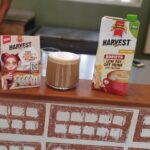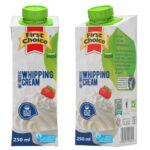
By Glen Meier, Strategic Director, Boomtown
A lot has changed since Henry Ford said: ‘you can have any colour as long as its black.’ Today consumers are spoilt for choice. The question is: is the increasing number of options stimulating purchase, or causing purchase-paralysis?
Product choice, marketing messages and media competing for our attention inundate us. The rising volume of marketing messages is not empowering consumers; it is overwhelming them. And rather than pulling them in, marketers are pushing consumers away with relentless efforts to engage.
Numerous experiments have shed light on how too much information and choice impairs decision making. Remember Sheena Iyengar from Columbia Business School and her jam jars? She set out jars of jam on supermarket shelves in groups of six or 24. 30% of those given six choices purchased jam; only 3% of those confronted with the 24 options, did.
And, psychologist Barry Schwartz demonstrated in The Paradox of Choice, that an excess of input leads to indecision, regret, and ultimately lowered satisfaction with the purchase process and the product.
The solution is decision simplicity, the ease with which consumers can gather trustworthy information about a product, and confidently and efficiently make a decision. Apple has mastered this, through limited choice and emotional connections and the simplicity of its user experience.
You can create this too using three principles:
- Define the problem consumers may face and demonstrate that you understand them
- Communicate a brand’s unique character
- Communicate simply: clarify your message and consumers will listen. Be the guide, not the hero, and support consumers in their decisions.
Always aim to simplify complex information or a brand challenge into a simple three-step solution that demonstrates you understand your audience and can guide them through their decision-making process. Distilling complex information gives customer confidence and contributes to building brand affinity.
The power of three doesn’t stop there!
Three seconds
Whether driving on the highway or rushing down the supermarket aisles, outdoor advertising and in-store point-of-sale have the same objective: to instantly capture attention and cut through the clutter. Outdoor is predominantly awareness to the consumer, and in-store drives purchase, either way, if we do not win the consumer in three seconds, we have lost.
Three words
Which essential words are you going to choose in your communication? What is the primary message, and the messaging hierarchy? Ask: is the primary message emotional and the secondary rational? Does the message build brand equity, or drive sales?
Simplicity to the power of three is about is about de-cluttering and limiting choice, ensuring an audience is engaged. Simplify the information to make it memorable, and ensure they are prompted to take action.
So next time you have five bullet-points on a slide in your presentation, remember, that you have two too many.
- MRF Unveils Latest MAPS® Data - 20th February 2025
- The BRC announces changes to the board and updates for 2025 - 17th December 2024
- Top 50 DSTV TV programmes – October 2024 - 12th November 2024






